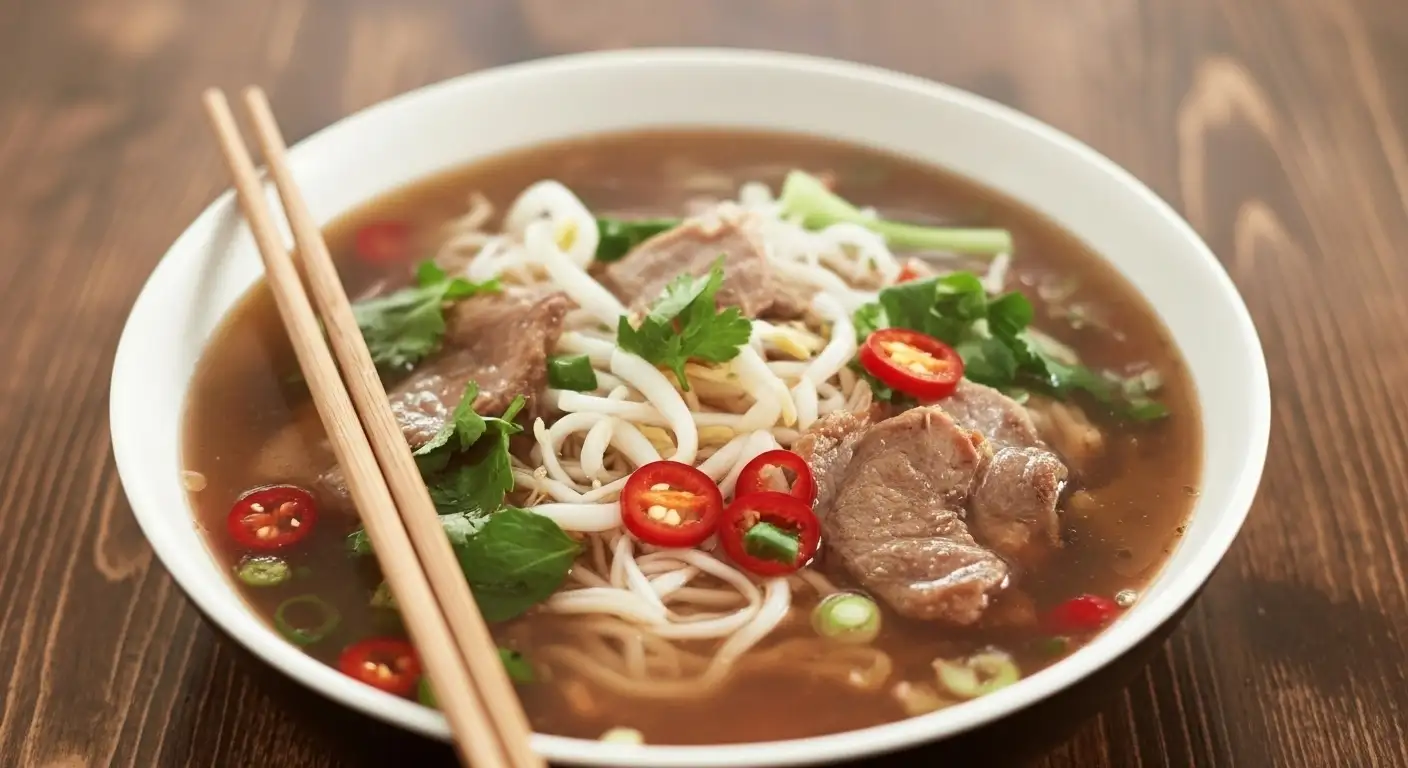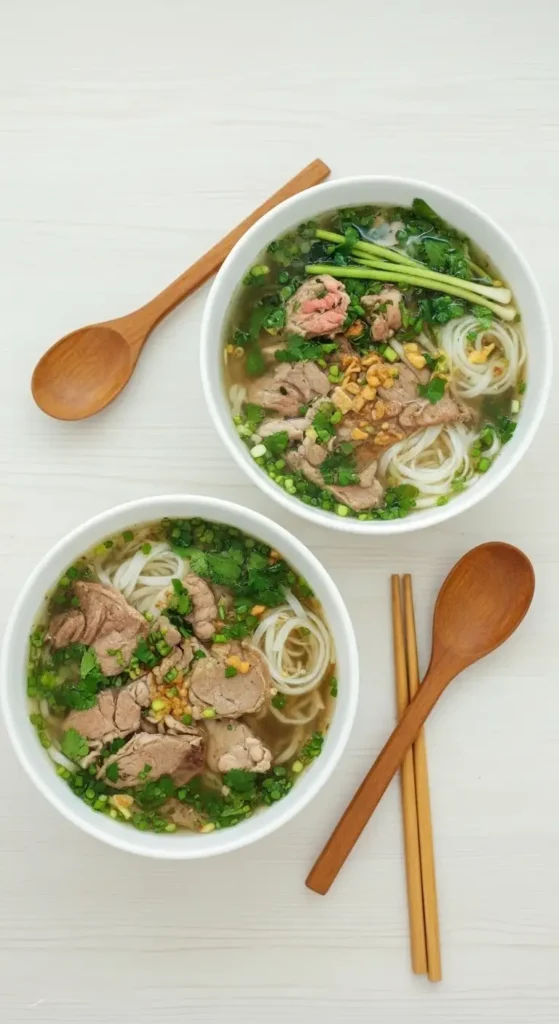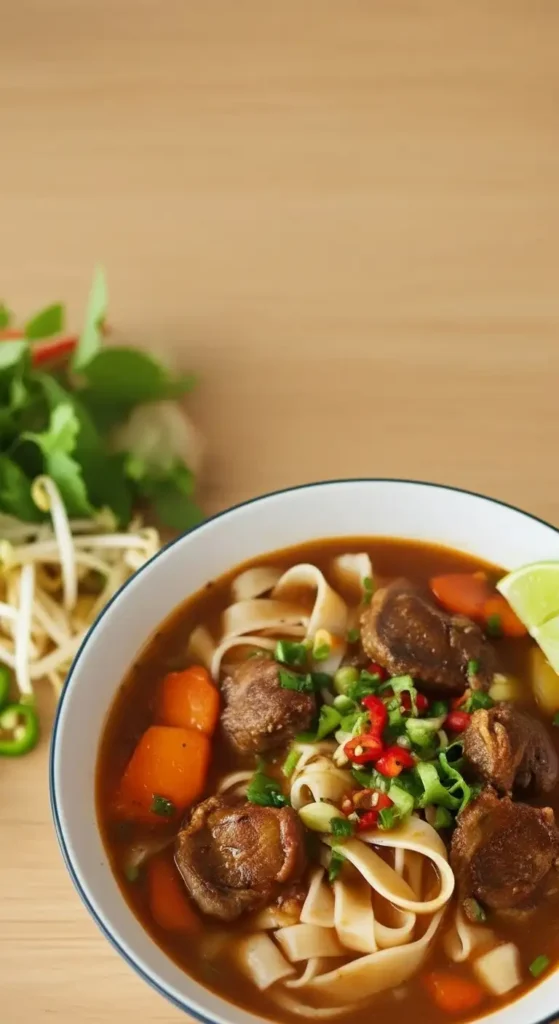1. Phở: The Basic Essentials
At its heart, Phở is an aromatic noodle soup that typically consists of four main components:
Broth (Nước dùng): This is the soul of Phở. Traditionally simmered for hours with beef bones (for Phở Bò) or chicken bones (for Phở Gà), it is delicately flavored with a blend of key spices: star anise, cinnamon, black cardamom, cloves, ginger, and onion. The quality of the broth is paramount.
Noodles (Bánh Phở): Flat, white rice noodles, usually made fresh, providing a smooth and slightly chewy texture.
Protein: Most commonly beef (Bò) or chicken (Gà). Beef cuts range from raw, thinly sliced round steak (tái), well-done brisket (chín), flank (nạm), and tendon (gân), to meatballs (bò viên).
Garnishes (Rau thơm): Fresh herbs and vegetables that add crunch, color, and fragrance. These typically include scallions, cilantro, and often a side plate of bean sprouts, basil, mint, and lime.

2. Types of Phở
While the classic Phở Bò (Beef Phở) and Phở Gà (Chicken Phở) are the mainstays, there are several popular variations:
| Phở Type | Translation | Description |
|---|---|---|
| Phở Bò Tái | Rare Beef Phở | Thin slices of raw beef that cook instantly when submerged in the hot broth. |
| Phở Bò Chín | Well-done Beef Phở | Slices of well-cooked beef brisket or flank. |
| Phở Bò Tái Nạm | Rare and Flank Beef Phở | A popular combination of rare beef and well-done flank. |
| Phở Gà | Chicken Phở | Made with a milder, clearer chicken broth and shredded or sliced chicken. |
| Phở Khô | Dry Phở | A noodle salad where the noodles are mixed with a savory sauce, and the broth is served on the side as a dipping soup. Popular in the Central Highlands. |
| Phở Cuốn | Phở Rolls | A Hanoi specialty where the usual Phở ingredients (beef, herbs) are wrapped in a single, un-sliced Phở sheet, served cold with a dipping sauce. |
| Phở Sốt Vang | Beef Stew Phở | Phở served with a rich, French-influenced beef stew (similar to Bò Kho), where the broth is thicker and darker. |
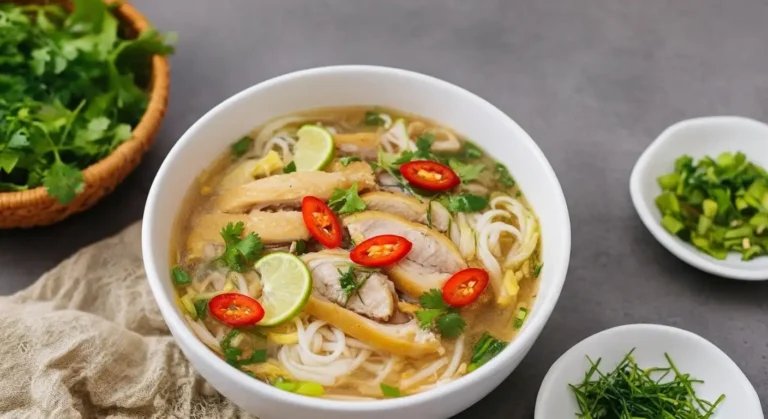
3. How to Eat Phở (The Vietnamese Way)
Phở is an interactive dish meant to be customized to your taste. Here is a simple guide to enjoying it:
Taste the Broth First: Before adding anything, take a moment to savor the broth. This is the chef’s creation, and appreciating its pure flavor is key.
Add Garnishes: Take the plate of fresh herbs (basil, culantro, mint) and bean sprouts and plunge them into the hot soup. This lightly wilts the vegetables, enhancing their aroma and texture.
Squeeze the Lime: Add a wedge or two of fresh lime juice to brighten the flavor of the broth.
Spice it Up: Use chili sauce (Sriracha or fresh chili slices) to add heat, and Hoisin sauce (a dark, sweet, savory sauce) for richness. These sauces are often mixed together on a small dish for dipping the meat.
Mix and Enjoy: Use your chopsticks to pick up the noodles and meat, and a spoon for the broth. It’s perfectly acceptable to bring the bowl close to your mouth and slurp! Don’t worry about being too tidy; enjoying the experience is what matters.
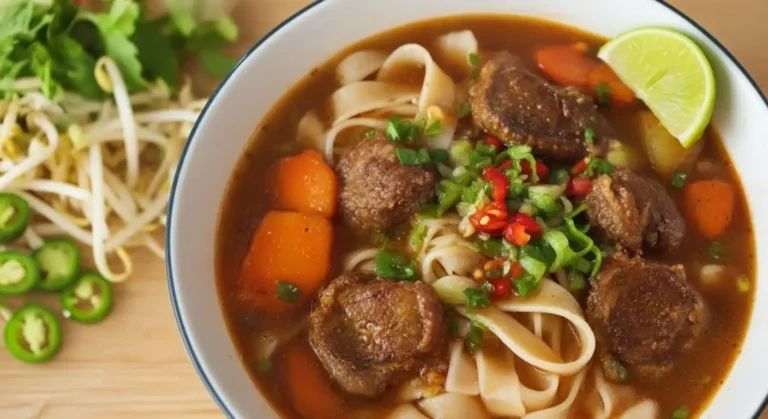
4. Regional Differences: North vs. South Phở
The dish originated in Northern Vietnam (specifically Hanoi and Nam Định) and evolved as it traveled south. The main differences are in the broth, noodles, and garnishes.
| Feature | Northern Phở (Phở Bắc) - Hanoi Style | Southern Phở (Phở Nam) - Saigon/Ho Chi Minh City Style |
|---|---|---|
| Broth | Clear, simple, and light, with a savory focus. Less sugar is used, emphasizing the pure beef/bone flavor. | Richer, darker, and noticeably sweeter, with a more pronounced presence of aromatic spices. |
| Noodles | Wider, thicker, and chewier rice noodles. | Thinner, more delicate rice noodles. |
| Garnishes | Minimalist. Primarily green onion, cilantro, and sometimes a small amount of chili. Few, if any, bean sprouts and no basil/hoisin are typically added to the bowl. | Abundant. Served with a large plate of fresh garnishes: basil, culantro, mint, lime wedges, and a generous heap of raw bean sprouts. Hoisin and chili sauce are standard condiments. |
| Protein | Primarily focuses on beef (rare or well-done). Chicken Phở (Phở Gà) is also very popular. | Wider variety of beef cuts, including tripe, tendon, and beef balls, in addition to rare and well-done slices. |
Central Vietnam Phở: While the Central region is more famous for other noodle soups like Bún Bò Huế (Spicy Beef Noodle Soup), Phở here often acts as a bridge between the two styles. The broth can be clearer than in the South but often incorporates a slight sweetness and is served with a moderate selection of herbs and condiments, reflecting the region’s diverse and spicy culinary traditions.

5. Highly-Rated Phở Restaurants in Vietnam
If you’re looking for a top-tier Phở experience, these restaurants consistently receive high praise and strong Google reviews:
In Hanoi (North Vietnam):
Phở Bát Đàn (49 Bát Đàn, Hoàn Kiếm, Hanoi)
A legendary spot known for its incredibly clear and traditional Northern-style beef broth. Famous for its unique “self-service” queue system.
Phở Thìn (13 Lò Đúc, Hai Bà Trưng, Hanoi)
Renowned for its unique Phở Tái Lăn (stir-fried rare beef Phở). The broth is richer and slightly fattier than Phở Bát Đàn.
Phở 10 Lý Quốc Sư (10 Lý Quốc Sư, Hoàn Kiếm, Hanoi)
A very popular and consistent option offering a variety of beef cuts in a clean, high-quality broth.
In Ho Chi Minh City (South Vietnam):
Phở Hòa Pasteur (260C Pasteur, Phường Võ Thị Sáu, Quận 3, Hồ Chí Minh 70000, Vietnam)
A long-standing, globally recognized spot that serves the classic, full-flavored Southern style Phở with a generous selection of herbs.
Phở Lệ (415 Nguyễn Trãi, Phường 7, Quận 5, Hồ Chí Minh, Vietnam)
Very popular among locals, known for its rich, slightly sweet, and savory Southern-style broth.
Phở Dậu (288 M1, 288J1 Nam Kỳ Khởi Nghĩa, Ward 8, Quận 3, Hồ Chí Minh 700000, Vietnam)
An interesting find that serves the Northern-style Phở (clearer broth, fewer garnishes) right in the heart of the South, offering a taste of Hanoi.
Enjoy your bowl of Phở—whether you’re a purist who prefers the simplicity of the North or an enthusiast of the bold flavors of the South, this iconic dish is a quintessential taste of Vietnam.
